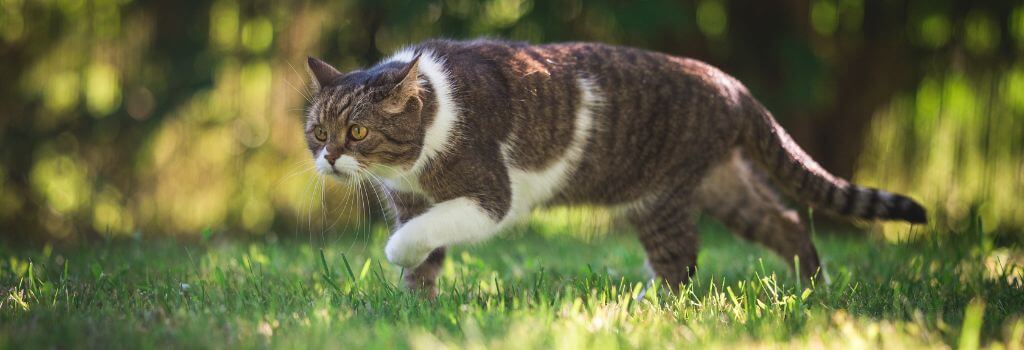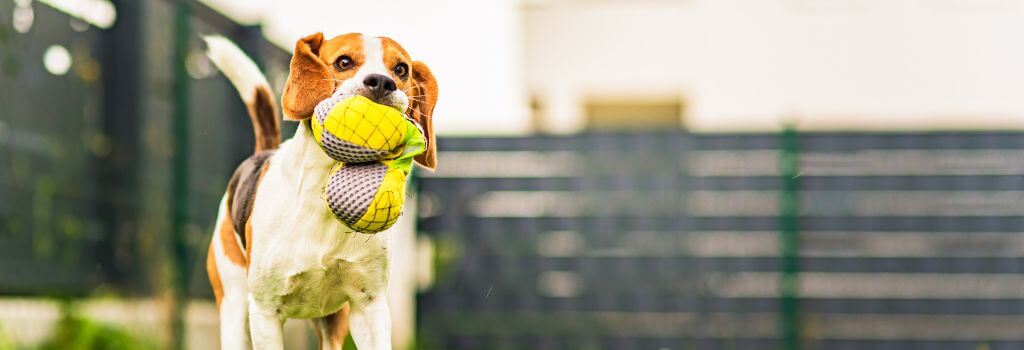Just like a lot of humans, pets thrive on structure, and a good, consistent routine is one of the simplest yet most impactful ways to support their overall health and well-being. A routine helps them feel safer in their environment, reduces feelings of stress and anxiety, and allows them to have their physical and emotional health needs taken care of in a predictable and consistent manner. Not to mention that it’s pretty cute for owners to see their dog or cat patiently waiting in front of their food bowl right at 5 o’clock waiting for dinner.
But, as you probably know, saying you're going to start sticking to a routine is a lot easier said than done. In this blog, we'll break down how structured routines can benefit you and your pet, as well as how you can create one tailored to your pet's unique needs to keep them happy and healthy no matter what life throws your way.
Why Routines Matter for Pets
Pets are creatures of habit, and their preference for routine is shown by their natural instincts. Think about it; animals in the wild rely on predictable cycles to know when to eat, rest, or stay alert to predators, so why wouldn’t our domesticated pets feel those same urges and instincts? While our pets don't face the same challenges and have their needs met in a different manner than wild animals do, they still benefit from a structured lifestyle that mimics conditions that their species have become accustomed to.

One of the greatest benefits of a schedule for pets is the effect it can have on their mental health. The predictability that a daily routine for dogs or cats brings can greatly reduce feelings of anxiety and stress, allowing them to feel more relaxed and less on edge throughout the day.
Pets that don't know what to expect from their day or know when their next meal or potty break is may become unsettled, leading to behavioral issues that stem from stress and anxiety like excessive barking or vocalizations, scratching, marking, or destructive chewing. On the flip side, pets that do have a sense of structure in their life have seen better outcomes for crate, obedience, and potty training, making routines and schedules something that comes highly recommended by professional trainers.
While pets may not perceive time in the same manner humans do – with research suggesting it may be experienced slower or faster for our animal companions– they still utilize environmental cues and their biological clock to help them anticipate key events in their day, like meal time or a walk.
Beyond the mental health benefits of routines for pets, consistency is also crucial for a dog or cat's physical health. Scheduled feeding times help regulate digestion and prevent issues like overeating or upset stomachs. Regular exercise keeps your pet fit and healthy, reducing the risk of obesity and related illnesses. And when you stick to a routine for veterinary care, grooming, and parasite prevention, you're actively supporting their long-term well-being, making putting your pet on a regular schedule a no-brainer.
Routines Are Great for Owners, Too!
The benefits of a routine for cats and dogs doesn't start and end with them – a solid routine for your pet can make your life easier as well!
With a set schedule, managing your time and ensuring your pet's needs are met throughout the day becomes a habit, and not something you need to stress about getting done. For example, knowing when your dog needs to go outside can reduce accidents in the house, while scheduled playtime can help channel their energy in positive ways. When you're already expecting to do these basic care tasks for your pet, you can better plan your own day and know exactly how much time you have available to dedicate to other things, like work, exercise, chores, and hobbies.
A predictable routine also strengthens the bond between you and your pet. When your pet knows they can count on you for meals, walks, and affection, their trust in you grows. And let's face it, few things are more rewarding than a happy, healthy pet who looks forward to spending time with you.
How to Get Your Pet Into a Routine
If you’ve ever tried to start a new schedule or work on forming new habits, like waking up early or going to the gym at a certain time, you’ll already know that establishing a routine takes time and patience, but the results can be so well worth the effort.
There will definitely be some challenges along the way, such as resistance to change or unexpected disruptions, but stay the course – once both you and your pet are used to the schedule, you’ll probably wonder how you ever functioned without it.
If you want to get your pet on a routine, start by identifying the main activities in your pet's day, such as feeding, bathroom breaks, exercise, and rest, and then, try to schedule these activities at the same times each day. It may take a little trial and error to figure out what works best for you and your pet, but stick with it and you and your pet will be on the same schedule in no time.
No matter what obstacles and challenges you face in getting your pet on a set schedule, just remember that consistency is key. Pets thrive when their schedule is predictable, so stick to the routine you set as closely as possible, even on weekends or days off.
With that being said, flexibility is also important. Life happens, and occasional deviations won't harm your pet as long as you return to the routine quickly. So if you have a social outing or are working late one night, consider adjusting the feeding and exercise times to fit your needs. For example, you can feed your pet a little earlier or later than usual, and ensure they get their exercise before or after your work hours. Your pet is a lot more adaptable than you'd think, so don’t be afraid to deviate from your usual routine if you need to for a day or two.
When introducing a new routine to your pet, the best strategy is to go slowly. Gradually introduce activities and timings to give them a chance to adjust to the new structure of their day. For older pets or those with special care needs, work with your veterinarian to make sure the routine is suitable and supportive of their health. For example, if you have an older cat with arthritis, you may need to be flexible with your scheduled playtime, as over doing it could do more harm than good, leaving your cat feeling tired and not at their best.

What to Include in Your Pet’s Daily Routine
- Regular Feeding Times: Scheduled meals promote healthy digestion and prevent overfeeding. We highly recommend working with your veterinarian to determine what type of food and serving sizes will best support your pet’s overall health.
- Exercise and Play: Physical activity keeps pets fit and helps manage their energy levels. Mental stimulation, like puzzle toys or training sessions, is equally important.
- Bathroom Breaks: Regular bathroom breaks help prevent accidents and allow your dog to relieve themselves comfortably. Cats are a little different when it comes to bathroom routines and should have access to a clean litterbox at all times.
- Grooming: Brushing, nail trims, and dental care should be part of the routine to keep your pet in tip-top shape. Staying on top of grooming tasks by making them part of your regular routine can keep your pet from getting matted fur, developing cavities, and experiencing the discomfort that comes with untrimmed nails.
- Training and Socialization: Short, consistent training sessions reinforce good behavior, while socialization helps pets feel comfortable in different environments. Socialization doesn’t need to be an everyday thing, as it can be overwhelming for some pets, but pet owners should aim to fit it into their weekly schedule regularly.
- Rest and Sleep: Pets need plenty of downtime to recharge. Make sure they have a quiet, comfortable place to rest. For dogs, this may be a crate or pen, and for cats, this may include a cat tower or comfortable bed or spot around the house.
Now that we’ve covered common elements of a pet’s schedule, let's break it down further for dogs and cats and take a look at what a daily routine for each might look like.
Dog Daily Routine
- Morning Walk and Bathroom Break
- Breakfast
- Mid-Morning Activities
- Midday Bathroom Break
- Evening Walk and Playtime
- Dinner
- Training
- Teeth Brushing and Grooming
- Wind-Down Time
- Bedtime Bathroom Break
But remember, every dog is different, and a routine that works for one family may not work for another due to a variety of reasons and even pet preferences. For example, some dogs may like to graze on food throughout the day instead of receiving meals at specific times. In these cases, it can be beneficial to not schedule multiple meals and instead plan out a designated time when you will refresh your dog's food and water supply so that their routine still allows for some consistency and predictability but ultimately caters to their existing eating habits and preferences.
Other considerations may need to be made based on your dog's age as well. For example, if you have a puppy or a senior dog that struggles with incontinence, it may be a good idea to schedule more frequent bathroom breaks to form good habits and keep accidents inside the house at bay.
Daily Routine for Cats
Cats are crepuscular creatures, meaning they are naturally most active during dawn and dusk. These twilight hours are ideal for engaging your cat in playtime, tapping into their natural hunting instincts. Cats actually thrive in routines similar to dogs: they enjoy meals, naps, and quality time with their favorite humans. So, plan a morning pounce or an evening zoomies session to make their day routine really hit the spot.
- Morning Meal
- Play Time
- Morning Nap
- Physical and Mental Stimulation
- Dinner
- Litterbox Maintenance
- Grooming and Nail Maintenance
- Evening Playtime
- Nighttime Routine and Winding Down
As with dogs, this schedule is likely to change based on what works for your cat and your household. This is especially true if you’re like hundreds of other cat parents and have a multi-cat household. Caring for multiple cats at once can be time-consuming, so don’t be afraid to prioritize your cat’s most pressing needs when building out your schedule. For example, if your cats love chasing each other around the house and occupying themselves, you may not need to include multiple times for play in your schedule, as the cats may handle it themselves and play when they feel like it.
Don't have a vet in your area yet? We can help you find a local veterinarian.
If you have more questions, the GeniusVets Teletriage platform will give you unlimited access to text and/or video calls with board-certified veterinarians! To learn more click here.
